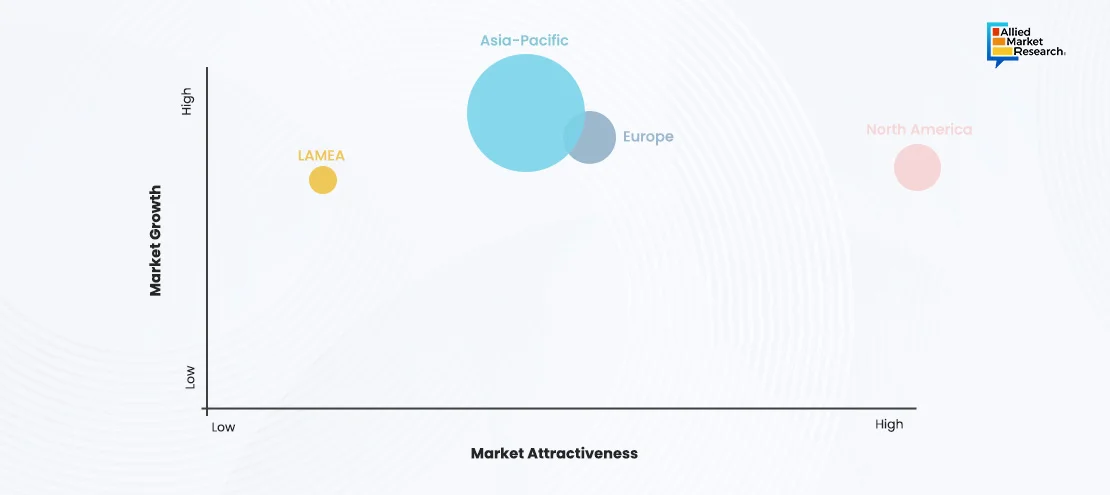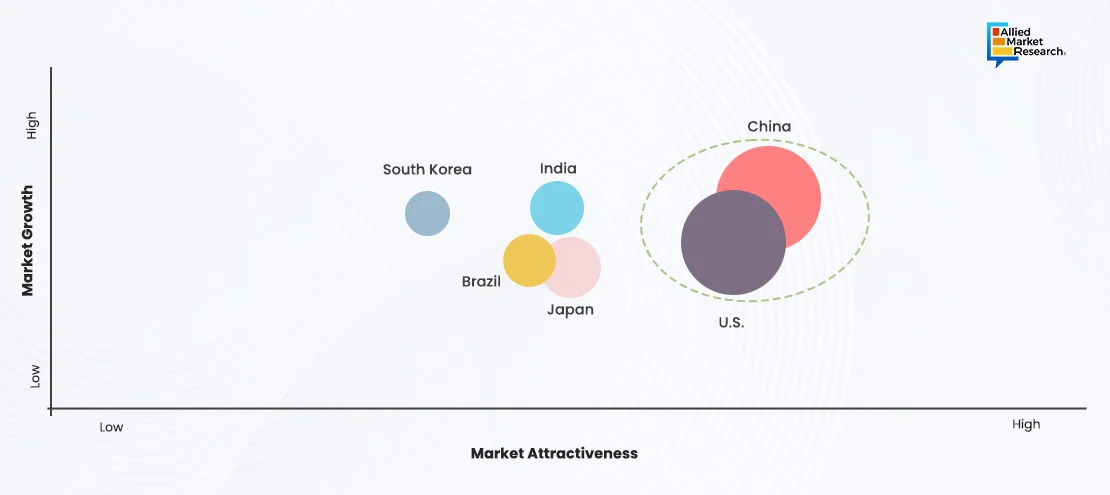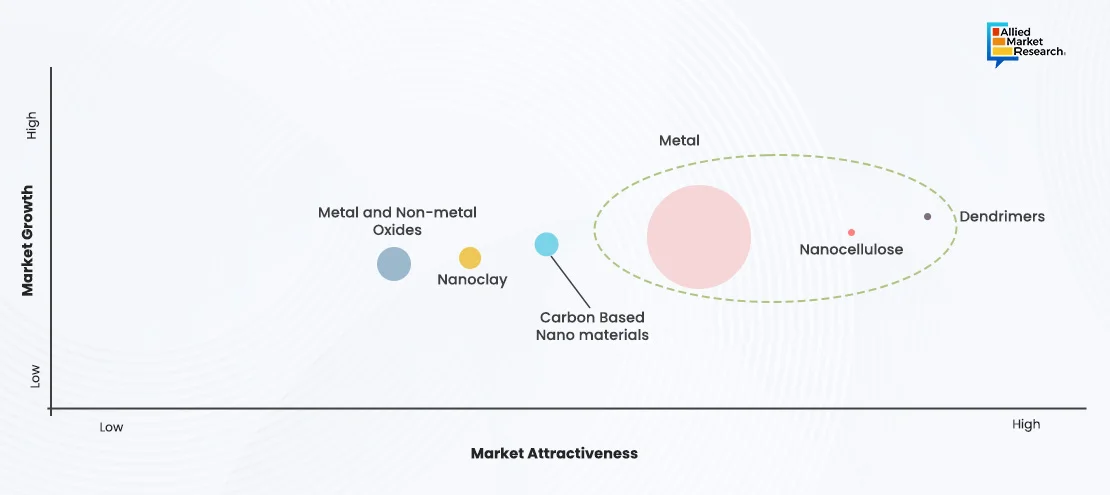Table Of Contents
- Carbon Graphite Market
- Carbon graphite is a type of carbon material in which the carbon atoms are arranged in a hexagonal lattice structure. As per a report published by Allied Market Research, the carbon graphite market accounted for $2.6 billion in 2022. The industry is expected to gather a revenue of $4.5 billion by 2032, rising at a CAGR of 5.7% during 2023-2032. The increasing use of carbon graphite in the aerospace and defense sector is due to its lightweight and high-strength properties. Additionally, the demand for carbon and graphite electrodes from steel manufacturing companies has risen immensely in the fourth quarter of 2024, thus accelerating the industry’s growth and success.
- Concrete Fiber Market
- White Cement Market
- Nanomaterials Market
- Graphite Market
- The essence

Yerukola Eswara Prasad

Koyel Ghosh
AMR’s Top 5 Emerging Materials and Chemicals Markets: Key Industries to Watch in Q4 2024

The growth of the materials and chemicals domain in the fourth quarter of 2024 is attributed to the growing transition toward sustainability and green chemistry. The rising concerns regarding environmental pollution have compelled companies to shift to eco-friendly material design and development processes. Moreover, many companies in the sector have even started adopting digital technologies to align their operations as per Industry 4.0 standards. The advent of nanotechnology and advancements in material science have created numerous opportunities in the landscape. Allied Market Research has recently published a study on the top 5 emerging markets in the materials and chemicals domain in Q4 2024. Each of these industries is analyzed extensively in their respective reports to throw light on the leading factors influencing the landscape. Moreover, the upcoming trends and latest developments in the markets are also discussed in the reports.
Carbon Graphite Market
Carbon graphite is a type of carbon material in which the carbon atoms are arranged in a hexagonal lattice structure. As per a report published by Allied Market Research, the carbon graphite market accounted for $2.6 billion in 2022. The industry is expected to gather a revenue of $4.5 billion by 2032, rising at a CAGR of 5.7% during 2023-2032. The increasing use of carbon graphite in the aerospace and defense sector is due to its lightweight and high-strength properties. Additionally, the demand for carbon and graphite electrodes from steel manufacturing companies has risen immensely in the fourth quarter of 2024, thus accelerating the industry’s growth and success.
The AMR report also highlights the performance of the industry in various regions across the globe including North America, LAMEA, Europe, and Asia-Pacific. All the major administrative, political, socioeconomic, cultural, and demographic factors impacting the industry are covered as part of this exercise. The study states that the Asia-Pacific region is anticipated to rise at the fastest growth rate of 6.1% during 2023-2032. The province held the highest market share in 2022 and is expected to continue its dominance in the coming period. The expansion of the automotive manufacturing sector in various countries such as India, China, Japan, etc., has led to a surge in demand for carbon and graphite materials. This has helped the market flourish in Asia-Pacific.
Concrete Fiber Market
Concrete fiber is a reinforced concrete material produced from steel, glass, synthetic, and natural fibers. Compared to conventional concrete, this material has higher shear capacity and better fatigue strength. The rising pace of urbanization and industrialization in developed and developing countries such as the US, China, India, Russia, the UK, Germany, and Japan have increased the demand for concrete fibers significantly. As per AMR’s study on the concrete fiber market, the industry is expected to amass a sum of $4.5 billion by 2032. The landscape accounted for $2.6 billion in 2022 and is projected to rise at a CAGR of 5.7% during 2023-2032. The overall increase in the number of mining activities in different countries has surged the applicability of concrete fibers, thus creating favorable conditions for the growth of the industry.

Based on the regional analysis provided in the AMR report, the concrete fiber market is expected to exhibit the highest CAGR in the Asia-Pacific region. In the last few years, governments in developing countries such as India and China have invested heavily in infrastructure projects, thus escalating the demand for concrete fibers from construction companies. The huge expansion in transportation networks in Australia, Japan, Indonesia, etc., in the form of railways, highways, tunnels, etc., has impacted the landscape positively in the province of Asia-Pacific. Along with this, the presence of multinational giants such as Owens Corning, Euclid Chemical Company, ABC Polymer Industries, etc., in the United States of America has played a huge role in the growth of the industry in the North America region.
White Cement Market
Recently, Allied Market Research published a report on the white cement market which throws light on the growth drivers, investment opportunities, and upcoming trends in the industry. As per the study, the landscape, which accounted for $10.1 billion in 2023, is estimated to gather a revenue of $15.2 billion by 2033, citing a CAGR of 4.2% during 2024-2033. The expansion of the decorative construction and architecture industry has contributed to the rise of the market in the fourth quarter of 2024. Additionally, in the last few years, there has been a huge increase in awareness regarding environmental sustainability. As a result, the emphasis on green building practices has grown, thereby opening new avenues in the landscape.

The AMR report classifies the industry into various segments based on type and end-use to help companies focus on the key investment areas and make the right business decisions in the long run. By type, white Portland cement held more than 60% percent of the market share in 2023 and is anticipated to continue its dominance in the coming period. The aesthetic appeal of this white cement type has made it popular for decorative architectural applications. Hence, the demand for white Portland cement has increased in residential and commercial sectors.
Nanomaterials Market
Nanomaterials are chemicals or substances which have at least one of the dimensions ranging between 1-100nm. Studies in material sciences have shown that materials, when broken down to such a tiny scale, exhibit physical, biological, and chemical properties that are quite different from their bulk counterparts. In the past few decades, the nanomaterials market has made significant gains due to the rising applicability of different nanomaterials in electronics manufacturing processes. Additionally, these materials are widely used in semiconductor fabrication techniques and energy-efficient lighting systems. The nanomaterials industry is anticipated to register a revenue of $62.8 billion by 2031, growing at a CAGR of 14.6% during 2022-2031. The landscape accounted for $16.3 billion in 2021.
The AMR report provides an in-depth segmental analysis of the market wherein the industry is divided into the lines of material type and end-use industry. By material type, the metal segment held the highest market share in 2021 and is anticipated to witness significant growth in the coming period. The rapid expansion of smelting and alloy-making industries has contributed to the rise of the metal segment in the fourth quarter of 2024. Over the years, the use of nanomaterials has increased in metal fabrication processes, thus impacting the landscape positively.
Graphite Market
Graphite, one of the most unique allotropes of carbon, is widely used in different end-use industries. Its high thermal resistance makes it an ideal material in steel and aluminum production processes. Moreover, graphite is also regularly used in automotive and aerospace industries due to its durability and electrical conductivity. As per a report published by Allied Market Research, the graphite market is anticipated to amass a revenue of $27.8 billion by 2032. The market accounted for $17.4 billion in 2023 and is expected to surge at a CAGR of 5.3% during 2024-2032. The growing demand for lithium-ion batteries driven by the shift to electric mobility has contributed to the expansion of the graphite industry in the fourth quarter of 2024.

The AMR report also throws light on the performance of the landscape in North America, LAMEA, Asia-Pacific, and Europe. The main purpose of this exercise is to aid companies in formulating their expansion strategies comprehensively. The study states that the North America region is anticipated to witness huge growth due to the increasing demand for graphite from the electronics and aerospace industries. Additionally, the use of this distinctive carbon allotrope by manufacturing companies in Asia-Pacific countries has created numerous investment opportunities in the market. Furthermore, the strategic alliances by leading companies in the landscape have impacted the industry positively.
The essence
The AMR study on the top 5 emerging markets of the materials and chemicals domain presents a detailed overview of the evolving dynamics of the industry in Q4 2024. These reports contain elaborate information on the upcoming trends and new developments in the landscape to help companies stay updated with respect to the latest happenings across the globe.
Stay in touch with our analysts for a comprehensive analysis of the leading growth drivers and investment opportunities in the materials and chemicals domain!

